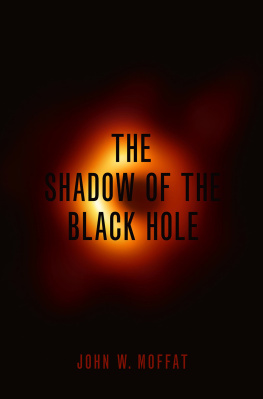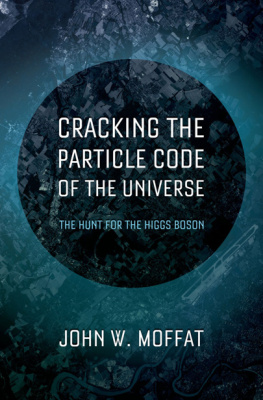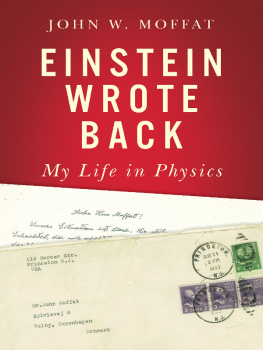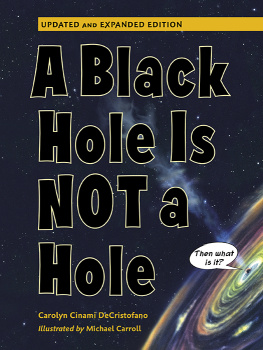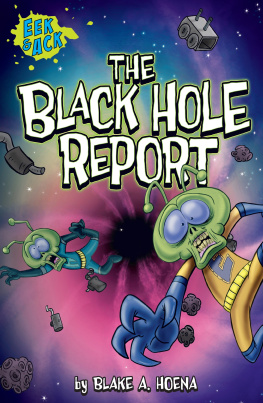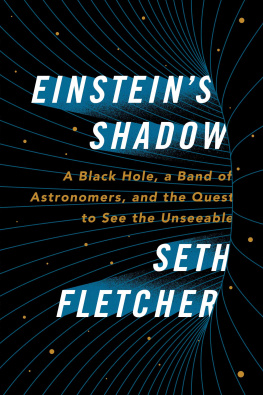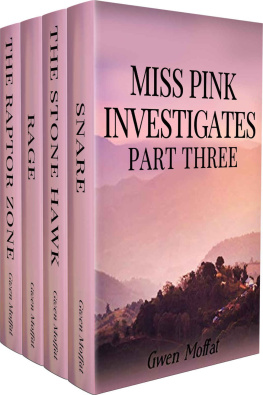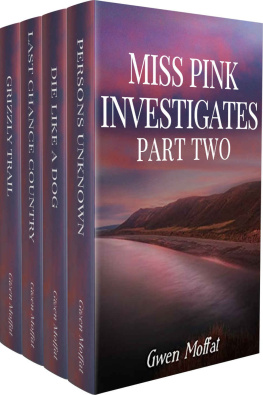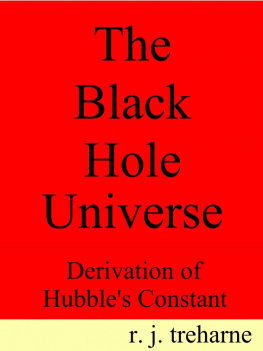John W. Moffat - The Shadow of the Black Hole
Here you can read online John W. Moffat - The Shadow of the Black Hole full text of the book (entire story) in english for free. Download pdf and epub, get meaning, cover and reviews about this ebook. year: 2020, publisher: Oxford University Press, genre: Art. Description of the work, (preface) as well as reviews are available. Best literature library LitArk.com created for fans of good reading and offers a wide selection of genres:
Romance novel
Science fiction
Adventure
Detective
Science
History
Home and family
Prose
Art
Politics
Computer
Non-fiction
Religion
Business
Children
Humor
Choose a favorite category and find really read worthwhile books. Enjoy immersion in the world of imagination, feel the emotions of the characters or learn something new for yourself, make an fascinating discovery.
- Book:The Shadow of the Black Hole
- Author:
- Publisher:Oxford University Press
- Genre:
- Year:2020
- Rating:3 / 5
- Favourites:Add to favourites
- Your mark:
- 60
- 1
- 2
- 3
- 4
- 5
The Shadow of the Black Hole: summary, description and annotation
We offer to read an annotation, description, summary or preface (depends on what the author of the book "The Shadow of the Black Hole" wrote himself). If you haven't found the necessary information about the book — write in the comments, we will try to find it.
The Shadow of the Black Hole — read online for free the complete book (whole text) full work
Below is the text of the book, divided by pages. System saving the place of the last page read, allows you to conveniently read the book "The Shadow of the Black Hole" online for free, without having to search again every time where you left off. Put a bookmark, and you can go to the page where you finished reading at any time.
Font size:
Interval:
Bookmark:


Oxford University Press is a department of the University of Oxford. It furthers the Universitys objective of excellence in research, scholarship, and education by publishing worldwide. Oxford is a registered trade mark of Oxford University Press in the UK and certain other countries.
Published in the United States of America by Oxford University Press
198 Madison Avenue, New York, NY 10016, United States of America.
John Moffat 2020
All rights reserved. No part of this publication may be reproduced, stored in a retrieval system, or transmitted, in any form or by any means, without the prior permission in writing of Oxford University Press, or as expressly permitted by law, by license, or under terms agreed with the appropriate reproduction rights organization. Inquiries concerning reproduction outside the scope of the above should be sent to the Rights Department, Oxford University Press, at the address above.
You must not circulate this work in any other form and you must impose this same condition on any acquirer.
Library of Congress Cataloging-in-Publication Data
Names: Moffat, John W., author.
Title: The shadow of the black hole / John W. Moffat.
Description: New York, NY : Oxford University Press, [2020] |
Includes bibliographical references and index.
Identifiers: LCCN 2019048687 (print) | LCCN 2019048688 (ebook) |
ISBN 9780190650728 (hardback) | ISBN 9780190650742 (epub)
Subjects: LCSH: Black holes (Astronomy) | Gravitational waves.
Classification: LCC QB843.B55 M64 2020 (print) | LCC QB843.B55 (ebook) |
DDC 523.8/875dc23
LC record available at https://lccn.loc.gov/2019048687
LC ebook record available at https://lccn.loc.gov/2019048688
To my wife, Patricia
My greatest indebtedness is to my wife, Patricia, whose patience, encouragement, and editing skills made this book possible. I thank my editor at Oxford University Press, Jeremy Lewis, for his enthusiasm about this book project and his patience with the delivery of the final draft while we waited for necessary data to come in.
My thanks go to Michael Landry, director of the LIGO observatory at Hanford, Washington, for his hospitality during our visit and his valuable help in getting the details right about gravitational waves and the LIGO observatory. My sincere thanks go to my collaborators Martin Green and Viktor Toth for their insights into the physics and astronomy in this book, and for their careful reading of the draft. I appreciate the support that the Perimeter Institute for Theoretical Physics has provided me during the writing of this book.
We left the city of Richland,Washington, on the desert road leading to the Hanford LIGO site to spend two days visiting the now-famous gravitational wave detector observatory. When my wife, Patricia, and I left our hotel, the sky was overcast with dark-gray clouds. There was a chilly, damp wind, and we had taken our coats to shield us from a typical March day in eastern Washington. The road to the site was straight, and we looked out over the unobstructed landscape covered with sagebrush and tumbleweeds blowing in the wind, all ringed by purple mountains in the distance. Hanford was one of the sites in the Manhattan Project, which produced the nuclear bombs that destroyed Hiroshima and Nagasaki in August 1945. We met very little traffic on our way, other than trucks leaving the infamous reactor site left by the Manhattan Project. The legacy of that project, the largest nuclear waste site in the United States, has contaminated the groundwater underneath 61 square miles of the site, and it threatens the headwaters of the Columbia River.
At a road crossing, a white-and-red-striped security bar prevented us from entering the old reactor site, and we turned left toward LIGO. We had an appointment to meet the head of the observatory, Michael Landry, at 9:00 a.m. No prominent signs told us that we had arrived at the LIGO site; however, off the road to our right, a large dark-blue tower rose up between white and Mediterranean blue buildings with the letters LIGO painted on its side, which stands for laser interferometer gravitational-wave observatory. This site in Washington is one of two in the United States that work in tandem to catch gravitational waves originating out in space. The other site is in Livingston, Louisiana. I wondered whether the buildings were alike at both sites.
We approached a building with a sign saying Visitors and parked the car. I shivered as we stood for a few moments viewing the site, which seemed desolate and empty of human beings. Perhaps it had this abandoned feeling because it was still early in the morning. Patricia and I entered the visitors building and found ourselves in a large, also-deserted lobby, with displays of the LIGO project on view. A secretary came into the room and greeted us, and we explained we had an appointment with Dr. Landry to visit the laboratory.
At that moment, Mike Landry appeared and greeted us warmly. He was tall and athletic looking, with an infectious smile. He led us into his office at the back of the building and invited us to take seats near a blackboard covered with mathematical formulas. He offered us coffee or tea. He explained how our visit was planned for the day, and didnt waste much time before getting into a detailed description of the observatory setup. As he spoke, my eye wandered to the blackboard, and there, at the bottom right, was written in chalk 170104. It immediately occurred to me that this could possibly indicate the date for a fourth gravitational wave detection from the collision of two inspiraling black holes far away in space. The new LIGO run had started in November 2016 and surely, hopefully, they had detected another black hole collision by now, in March 2017. Two strong signals of gravitational waves had been discovered alreadyon September 14, 2015 (GW150914), and on December 26, 2015 (GW151226)and a less convincing one on October 12, 2015 (LVT151012). The names of the events are simply the dates on which they occurred, with GW standing for gravitational wave and LVT standing for LIGO-Virgo transient.
My eyes returned to Landrys face and he smiled because he realized I had picked up on the date of the fourth gravitational wave detection event. He chuckled and said, Yes, that is the fourth event.
Well, I said, I wasnt going to mention anything about what I saw on the blackboard, because Im sure the detection of the event is under a cloud of secrecy.
Mike chuckled again and said, Indeed, whatever passes between us now regarding this event should be kept quiet until we officially announce the detection.
He continued with his description of some of the basic technical issues and problems faced by the LIGO team, and how they had resolved them successfully. At a pause, I could not resist the temptation to press him about the latest detection. I presume the LIGO collaboration has already analyzed the data?
Yes, he said, thats correct. The masses of the two merging black holes are 31 and 19 solar masses.
The gravitational waves detected by LIGO originate from the crashing together and merging of two massive, faraway compact objectsblack holes or neutron stars. The LIGO team is able to figure out information such as the distance of the merging objects from Earth, their masses, and their spins by clever analysis of the gravitational wave data coming in.
Aha! I said. So the primary black hole masses are still large, comparable to the primary black hole masses for the first event, GW150914. What about the spin alignment for the merger?
Font size:
Interval:
Bookmark:
Similar books «The Shadow of the Black Hole»
Look at similar books to The Shadow of the Black Hole. We have selected literature similar in name and meaning in the hope of providing readers with more options to find new, interesting, not yet read works.
Discussion, reviews of the book The Shadow of the Black Hole and just readers' own opinions. Leave your comments, write what you think about the work, its meaning or the main characters. Specify what exactly you liked and what you didn't like, and why you think so.

